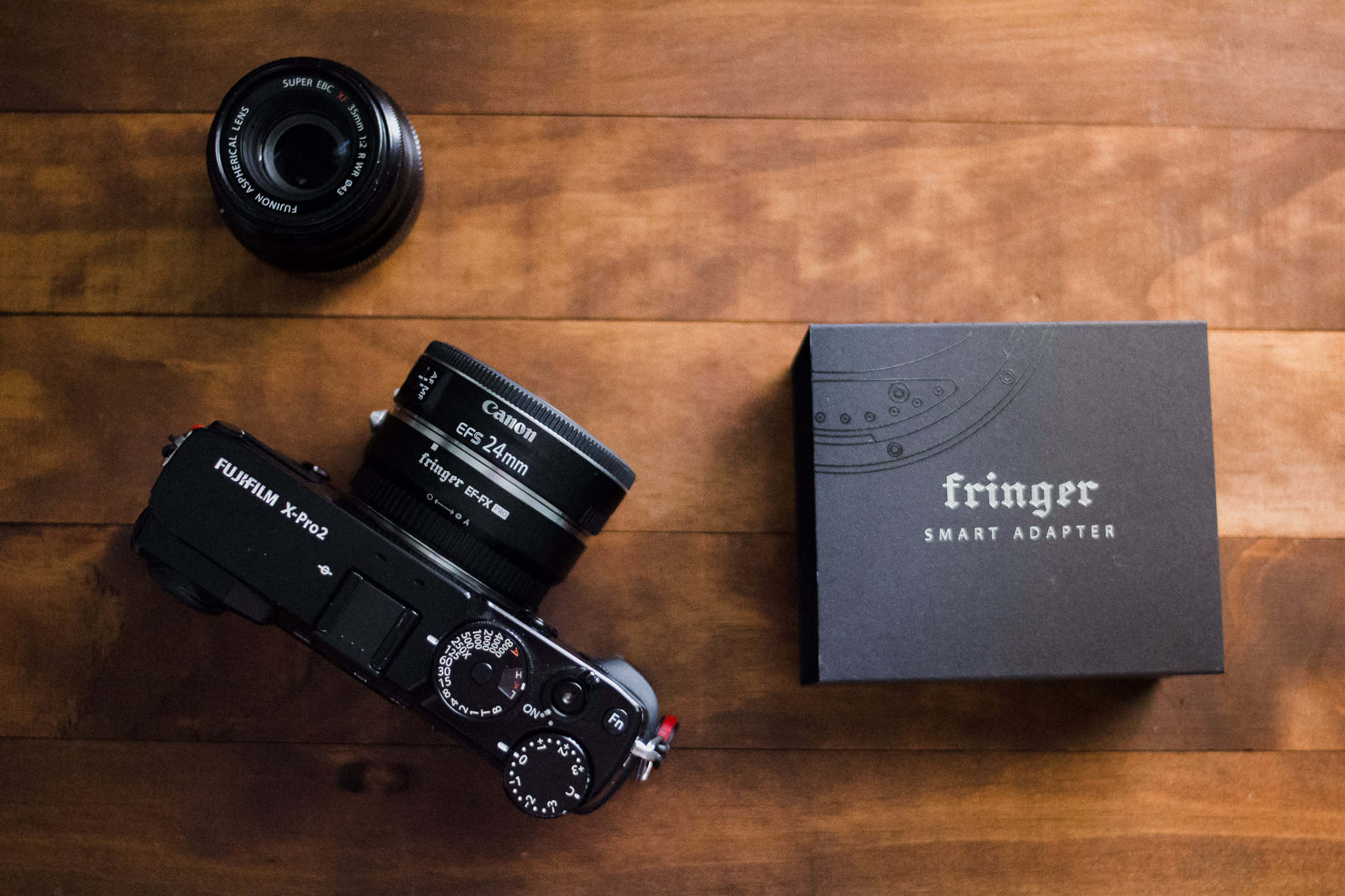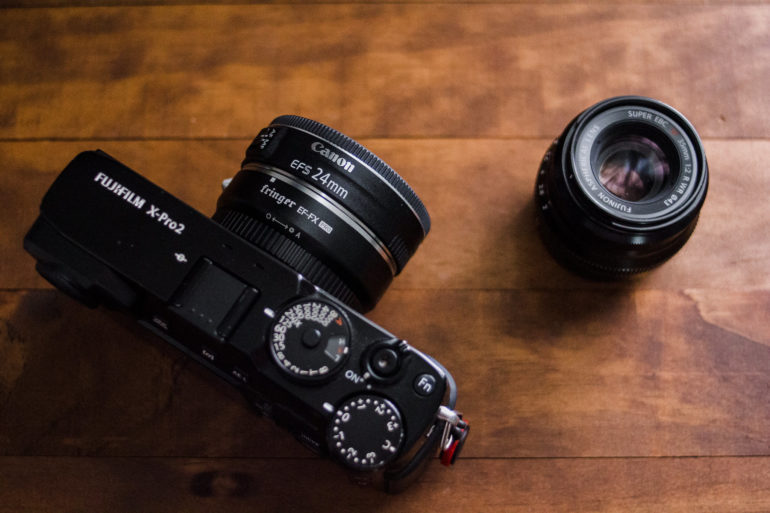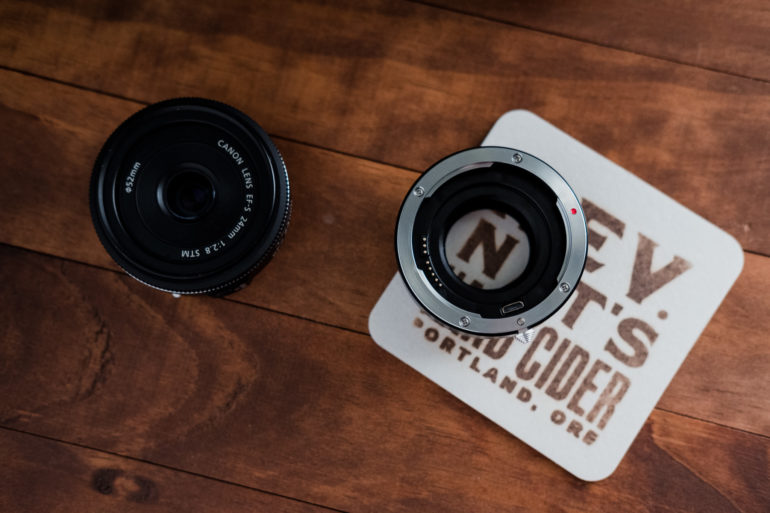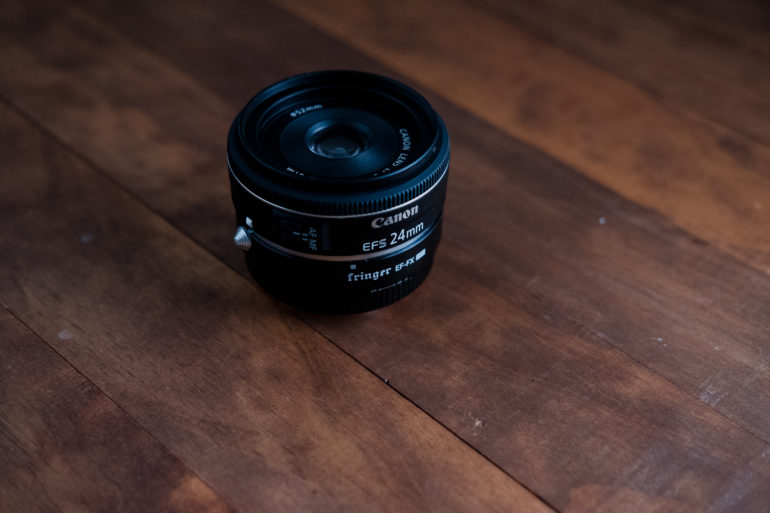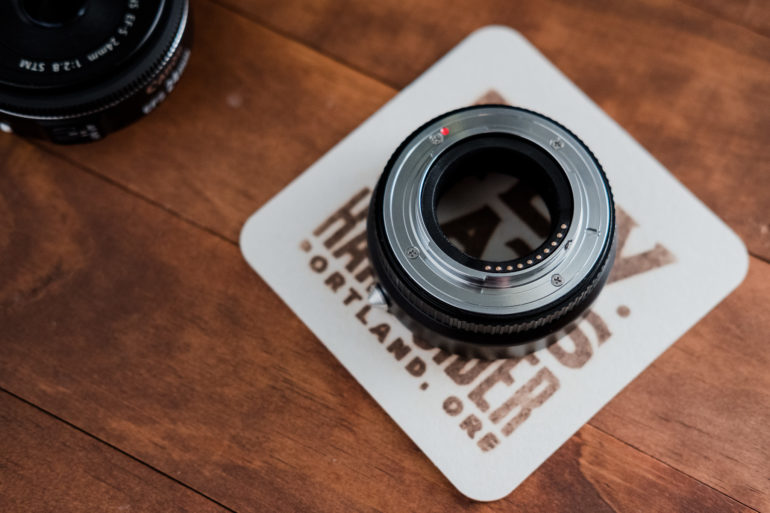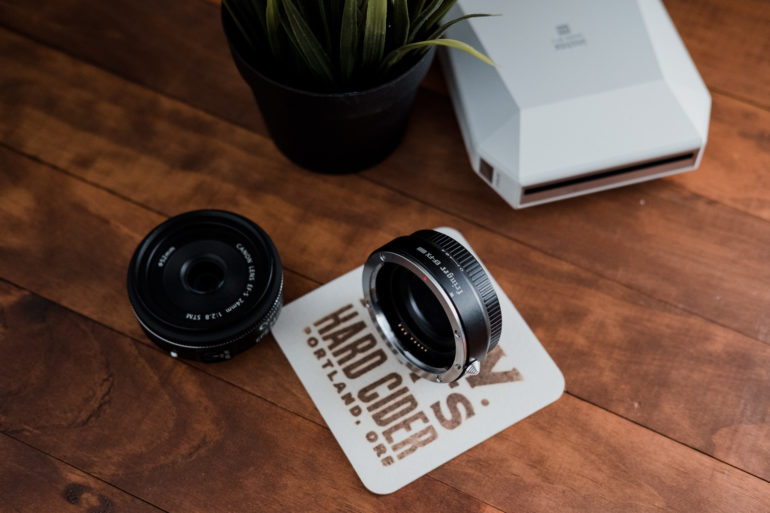The Fringer EF-FX Pro adapter has a whole lot going for it.
Adapting DSLR lenses of all kinds to your mirrorless camera has long been one of the coolest things about going mirrorless. It has also made that process of transferring from an old DSLR system to a newer mirrorless one that much easier of a process for a lot of photographers. The caveat being that the majority of these adapters are just dummy adapters, meaning they hold the lens in the right spot, but there is no AF or electronic communication to the camera.
The Sony system has long enjoyed the ability to use Canon EF lenses with AF and full electronic control, but for Fujifilm shooters, the dream of these so-called ‘smart adapters’ has been not much more than a mirage, until somewhat recently. There are now several EF-FX smart adapters at various stages of development, with a few available on the market. One such adapter is the Fringer EF-FX Pro, a smart adapter that allows you to use your Canon EF or EF-S lenses on your Fujifilm X-Series camera body with full AF functionality and electronic aperture control, as well as an aperture ring on the lens itself (there is also a non-pro version of this adapter which is virtually identical but without the built-in aperture ring).
One of the big concerns with smart-adapters such as the Fringer EF-FX Pro is whether or not they perform well enough to justify their cost. That is, in part, one aspect of this new breed of Fujifilm smart adapters that we wanted to investigate in this review. So if you’re ready – let’s get into it.
Pros and Cons
Pros
- Allows use of Canon EF and EF-S Lenses on Fujifilm X-Series cameras
- Built-In aperture ring
- Quality metal (Brass) construction without being heavy
- Frequent firmware updates to improve performance on various lenses
- Full EXIF data sent to the camera, including lens name and aperture used
- Compatible with Canon lens Image Stabilization
Cons
- No ¼ 20 thread for tripod/monopod mounting
- Not weather sealed
- Expensive
Gear Used
I used the Fringer EF-FX Pro in combination with the Fujifilm X-Pro2 and a host of Canon mount lenses including the Canon EF 85mm F1.8, Canon EF-S 24mm F2.8, Tamron 70-200mm, and Sigma 18-35mm F1.8.
Tech Specs
If you are interested in the full specs for this lens adapter you can find them on the Fringer website.
Ergonomics
In terms of lens adapters, the ergonomics are all virtually the same, and that is in no way different here with the Fringer EF-EF Pro. Basically, you have a Fujifilm X-Mount on one end that attaches to your camera, and on the other side, you have a Canon EF mount to attach the lens to. The adapter holds the lens the appropriate distance from the X-Trans sensor to allow it to focus and perform properly and sends important exposure and focusing data to the camera to allow for accurate AF and exposure performance.
The base of the adapter features an electronic aperture ring, this allows you to change the aperture on whatever Canon lens you have mounted to your Fujifilm camera the same way that you would on one of your nicer Fujifilm lenses with a built-in aperture ring. Alternatively, you can also set up your camera to allow for a control dial to change the aperture on your lens if you prefer. The aperture ring has no F-stop markings because these are dependent on whatever lens you attach. This means that unlike your Fujifilm lenses, where you can look down at the lens to see your aperture, with this adapter you would need to look at your EVF or LCD screen in order to see what your aperture is set to.
On the left side of the Fringer EF-FX Pro, there is the standard lens release switch. When you pull this back towards the base of the adapter (towards the camera) it will release the Canon EF lens that you have attached; allowing you to remove the lens and replace it with another.
Other than that, there is really not much to say about the ergonomics of this adapter. If you have ever used a lens adapter on a mirrorless camera you more or less know how this one will look and feel on your camera. It’s simple, performs its intended function, but really it is not much to write home about.
Build Quality
Alrighty, so in terms of its build quality, the Fringer EF-FX Pro feels really good. As noted in the pros and cons section, this adapter features a brass EF lens mount as well as a brass X mount. The actual body of the adapter itself is made of a metal alloy, which also feels very strong and solidly constructed. When it is connected to the camera the connection is firm and there is no more wobble than you would get with an actual Fujinon lens attached to the camera, which is good to see because this is always a concern with lens adapters.
I wish that the EF-FX Pro had weather sealing, as this is really the only negative that I can come up with from a build quality perspective. Chances are, if you are using this adapter, you are making use of one of Fujifilm’s higher-end camera bodies, which are all weather sealed. Additionally, if you are utilizing nicer Canon L glass, the sort that a professional switching to Fujifilm may still have on hand, chances are good that the lens you are mounting to the adapter is also weather sealed. This means that the adapter is the weak link in that chain, and for a professional, that could cause headaches in the future if the weather turns unexpectedly nasty during a shoot outdoors.
Really though, other than that one critique, the Fringer EF-FX Pro is as solidly built as any other quality smart adapter that I have used. Even compared to my Canon brand EF to EF-M adapter than I have for my EOS-M, this feels at least as good as that, possibly better in some respects.
Ease of use
Again, going back to my point above about an adapter being an adapter. This is about as easy to use as any photography accessory known to man. You simply attach the lens to one end and then attach the adapter to the camera. That is it, you don’t need to change any camera settings, you don’t need to turn anything on; it is the very definition of ‘Plug and Play’, just attach it and you are good to go.
The only thing I would note here is that the aperture ring could possibly take some getting used to for people with larger fingers. It is at the very base of the lens, and while it is easy to tell once your fingers are on it without needing to visually see that they are, it is sort of crammed at the base of the lens and doesn’t really fall in a comfortable place (for my hands at least). Other than that the adapter works great.
Focusing
Focusing with the Fringer EF-FX Pro is a piece of cake, though its performance is pretty heavily dependent on what lens you have attached to the camera. In terms of the Canon branded lenses that I used with this adapter, I had no issues with focusing accuracy or performance. The lenses and the adapter functioned as expected, and in fact, I would say that they functioned way better (faster, accurate, even tracking) than I expected given that this is such a new idea for the Fujifilm system.
Heck, even face tracking worked pretty well with these Canon brand lenses. Not quite as well as with my Fujifilm lenses, but well enough that I was comfortable leaving the feature on while I was out testing the adapter.
That said, the performance with the third party lenses specifically zooms, was much more hit or miss. To be fair though, this was also expected to be the case. The Tamron 70-200mm F2.8 (now three generations old) that I was able to test this with would not work at all, not even with manual focus. The Sigma 18-35mm F1.8 that I used with this adapter did alright, functioning as I would expect it to most of the time, but occasionally having a weird glitchy focus or aperture change issue.
So, if there is any lesson from this, it is that for me at least, I would stick to only adapting Canon OEM lenses with this adapter for the time being. At least until Fringer is able to release additional firmware updates with optimizations for more third-party lenses.
Image Quality
The image quality, in my experience, is mostly unaffected by this adapter thanks to it not utilizing any optics. In other words, crop factor aside, you should love your Canon lenses on your Fujifilm camera just as much as you did on your Canon camera. Everyone always talks about the color rendition and such of Canon lenses, as well as the general industry consensus that Fujifilm has great color out of the camera; let’s just say the two pair up nicely, in my opinion.
Image Samples
Conclusions
Now is the time to bring this all to a point and share some conclusions with you. The Fringer EF-FX smart adapter brings with it some excellent capabilities for Canon to Fujifilm converts. Allowing these photographers to ease that transition period by making use of their Canon lenses while they work on building up their native Fujifilm lenses. It makes a lot of sense for photographers that already own large Canon kits to invest in an adapter like this if you ask me, it will save you a ton of money in the sort terms while you are getting used to a new system.
However, for photographers who don’t already own Canon glass, the added cost of this adapter really doesn’t make much sense. Just go out and buy native Fujinon lenses, unless for some reason there is no equivalent lens for what you are wanting in the Fujifilm system. For example, I really love using the Canon EF-S 24mm F2.8 with this adapter and my X-Pro2, it functions as well in most situations as my Fujifilm glass does, and it is also still very compact and lightweight. However, the cost of the lens and the cost of the adapter together makes it a combination that doesn’t make any sense for someone that doesn’t already own either product.
So, do I recommend this adapter? Yes, if you honestly feel like you need it. It doesn’t make sense for everyone, but for those who do have the need/use for a smart adapter like this on their Fujifilm camera then this is an excellent performer that I would highly recommend.


